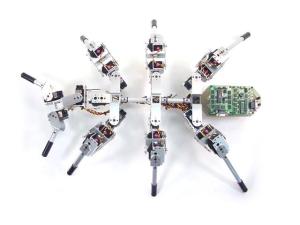First of the readers we have Actor Network Theory, which is essentially a (French post-structuralist) methodological research and analytical tool in understanding how (not why) heterogenous networks are formed, the actors (person/object/organisation as components) that constitute the network and how much agency (relations/influence/power) that each actor extends within the ‘assemblage’, which is of course is made of smaller assemblages and is in turn part of larger assemblages, as with the actants within. Additionally it is down to the researchers powers of ‘Litanizing’ every component that defines a given apparatus’ scope and thus its usefulness as an analytical tool.
 The ANT theory often pre-supposes that all actants within the network have roughly equal agency in any given assemblage, however this is usually not the case as certain components may act is ‘nodes’ within any given network constituting a gravitational focus point for the agency of actants, as a interior relation to the assemblage. Remove these ‘nodes’ and the system will fall apart, whereas smaller or peripheral actors within the assemblage may be removed or transposed with little effect to the network, an exteriority of relations, as ANT theory doesn’t seem to take into account the scalability and mutability of assemblages, and in most cases digital networks. While there is little word-space to go further, lets move on to…
The ANT theory often pre-supposes that all actants within the network have roughly equal agency in any given assemblage, however this is usually not the case as certain components may act is ‘nodes’ within any given network constituting a gravitational focus point for the agency of actants, as a interior relation to the assemblage. Remove these ‘nodes’ and the system will fall apart, whereas smaller or peripheral actors within the assemblage may be removed or transposed with little effect to the network, an exteriority of relations, as ANT theory doesn’t seem to take into account the scalability and mutability of assemblages, and in most cases digital networks. While there is little word-space to go further, lets move on to…
Assemblage Theory and Social Complexity is less a methodology like ANT and more an ontology that utilises expanded assemblages to explain the how/why relations within social constructions at different scales. DeLanda posits that components (actors) within an assemblage are constituted as material/expressive (semiotic) forms (it’s properties) and exert agency (it’s capacity to) as territorial/deterritorialising an assemblage, in which specialised systems (such as genetics or linguistics) encode/decode the assemblage for transmission of relations within the assemblage and to other systems of assemblages.
The most crucial departure from ANT is that Actors/Components cannot be defined entirely by its relations to others in any one given system, (interiority) that each contain their own portable properties that may be transposed between networks. Another departure is that actors are often real-world entities and not empty-signifiers, and as such belong to a diverse range of assemblages simultaneously, and also cannot take into account more abstract institutionalised relations such as power/inequality and other ‘events’ that may occur. Thanks to The Pinocchio Theory for expounding where Wikipedia hasn’t.
Well that was a lot of working through the theory, but what of digital distribution? The Internet is essentially the largest network assemblage, perhaps we need a couple of quantum computers to compile that extensive list. In the mean time, please check out this Giant Map of Web Trends
Join the Inter-network…

